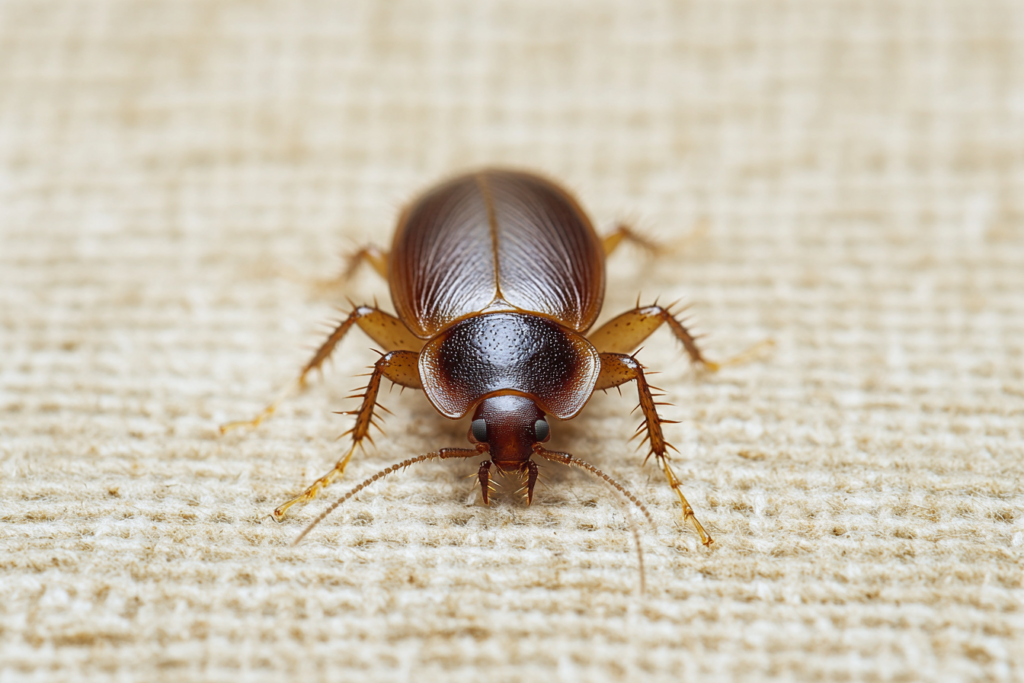Finding unexpected bugs in your home can be startling, but knowing which ones require immediate action can save you thousands in potential damage. From tiny rice-shaped droppings to mysterious scratching sounds in your walls, these warning signs shouldn’t be ignored. What might seem like a single pest could actually indicate a larger issue lurking behind your walls.
Most common household pests to watch for

The top offenders in American homes are bed bugs, termites, and ants. Bed bugs alone generate over 150,000 monthly searches from desperate homeowners, with states like California, New York, and Pennsylvania reporting the highest number of cases. While some bugs might seem harmless, others can cause extensive damage to your property.
Termites pose a particularly serious threat, especially in states like Florida, California, and Texas. These silent destroyers can compromise your home’s structural integrity before you even notice their presence. Looking for discarded wings, hollow-sounding wood, or mud tubes along your foundation? These are red flags that require immediate professional attention.
Warning signs that require immediate action
Droppings are often the first sign of unwanted guests. Look for small, rice-shaped pellets near baseboards or in kitchen cabinets. Strange scratching sounds, especially at night, could indicate rodent activity. Have you noticed unusual sawdust-like material near wooden structures? That’s a classic sign of termite or carpenter ant activity.
Keep an eye out for unexplained tracks or grease marks along walls – these are telltale signs of rodent pathways. A sonic pest repeller can be an effective first line of defense while you await professional help.
Where to check for hidden infestations

Start your inspection in moisture-prone areas like bathrooms, kitchens, and basements. Check dark corners, behind appliances, and under sinks. Don’t forget to examine window frames and door thresholds – these are common entry points for pests.
What about that stack of cardboard boxes in your garage? Pests love to nest in paper products and cardboard. Consider switching to sealed plastic storage containers to eliminate potential hiding spots.
Quick action steps for different types of pests
For ants, immediately seal food sources and track their entry points. Spotted a cockroach? They rarely travel alone – start by sealing gaps around pipes and setting appropriate traps. With bed bugs, isolate affected items and contact a professional immediately – these resilient pests require specialized treatment.
Rodent activity calls for a dual approach: seal entry points (even those as small as a quarter) and set appropriate traps. A professional inspection can identify hidden access points you might miss.
Prevention strategies that actually work

Regular maintenance is your best defense. Seal gaps around utility lines, repair damaged screens, and keep tree branches trimmed away from your home. Remember: even clean homes can experience pest problems – it’s about access points, not just cleanliness.
Store food in airtight containers and fix any moisture issues promptly. Consider installing door sweeps and using weatherstripping around windows and doors to create a barrier against unwanted visitors.
Remember, early detection and quick action are crucial when dealing with household pests. While some DIY methods can help manage minor issues, significant infestations require professional intervention. The longer you wait, the more extensive (and expensive) the problem becomes. Take action at the first sign of trouble to protect your home and peace of mind.
